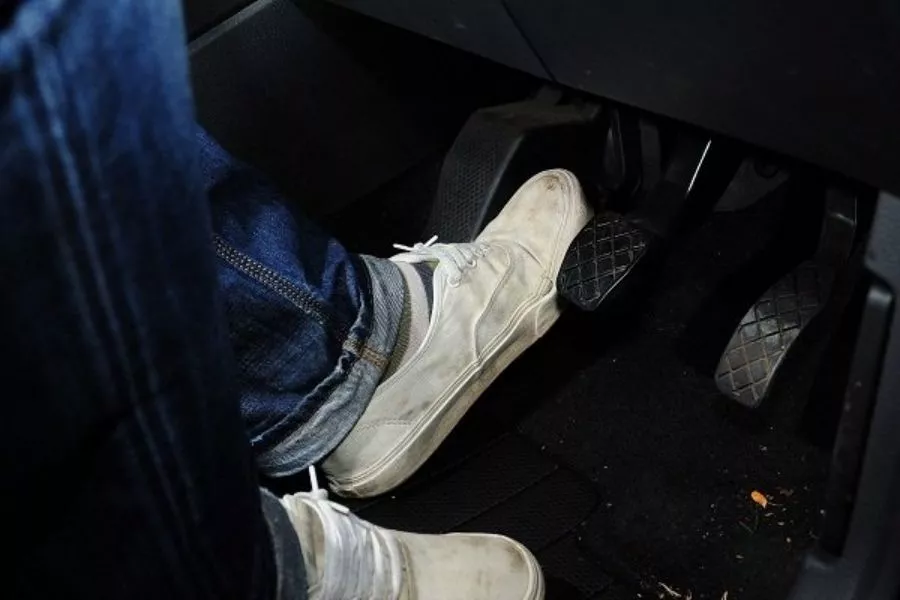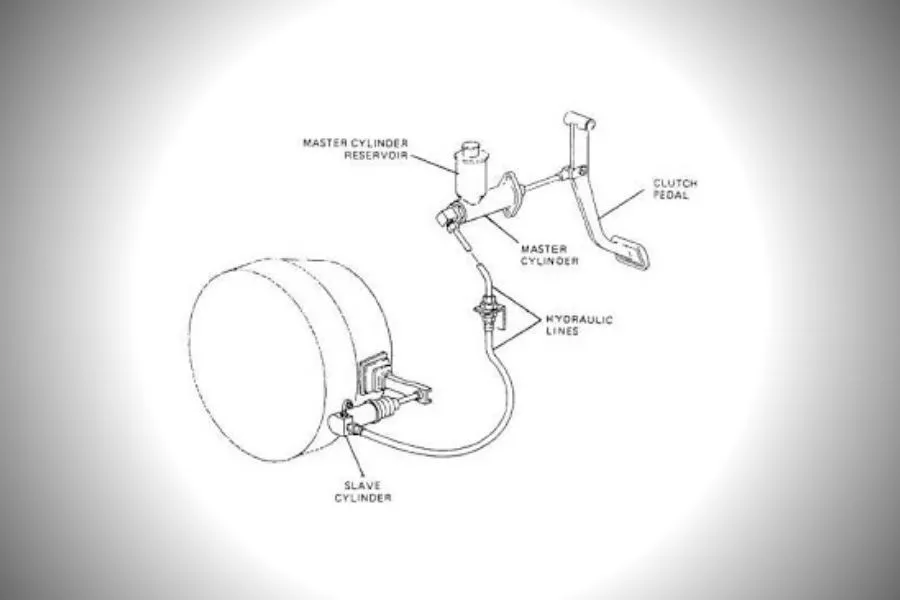As the name implies, a hydraulic clutch uses fluid instead of a cable to actuate its disc. The said fluid is stored in reservoir cylinders for the system to control pressure. If one presses the pedal, the reservoir in the system pushes the said fluid, which in turn pushes the parts necessary to shift gears.

Hydraulic clutches are often easier to operate than cable clutches
Like most moving parts, the clutch plate on a hydraulic clutch will wear down eventually. The hydraulic system will adjust accordingly, but there will come a time that the human element, the driver, will find using the clutch uncomfortable. As such, this warrants an adjustment. So how does one do that?
How to adjust a hydraulic clutch
To adjust a hydraulic clutch, follow these steps;
1. First, secure the car. Use the right number of chocks, and don’t forget to engage the parking brake.
2. Next, determine if your clutch slave-cylinder is adjustable or not. This will vary from model to model.
3. Locate the clutch master cylinder. There are numerous sources on the internet for various makes and models so we advise you to do your own research. Usually though, the rear of the clutch master cylinder is linked to a metal tube, which in turn connects the latter to the slave cylinder. Near the slave cylinder section, the tube is flexible. Inside, you’ll find the piston, the push rod, several nuts, and a seal.

A basic diagram of a hydraulic clutch system
4. For the actual adjustment, you can turn the adjustable nut using a wrench. Doing so will change the length of the push rod. This in turn will change when the clutch will engage. If the rod is longer, the clutch will take more time to engage. The opposite is true if the rod is shortened.
Do note that if you find that the clutch engagement isn’t adjusting at all, there might be something wrong with the slave cylinder’s parts. Also, as you are adjusting the pushrod, look out for wet spots. These are indicative of a leak. If you spot leaks, then it might be the right time to get this fixed.
How to adjust clutch pedal height
If your clutch uses a cable instead of a hydraulic system, adjusting the clutch height is easy. One has to pull the clutch cable, and loosen the nuts that hold it in place. Next, pull at it again and you’ll feel when the clutch fork engages. Once you find this engagement point, lock the nuts holding the cable again.

A diagram of a cable operated clutch
If your car uses a hydraulic clutch, then it is considered as a self-adjusting clutch. It does set itself to provide the right bite point, and the right amount of free play - that is, when it works. Sometimes though, you’ll find that you need to help it adjust. To do that, keep the car running, engage the parking brake, and lift the clutch up.
To test if this method worked, drive around a bit and focus on the feel of the clutch. If it didn’t work, then it might be time to have your car fixed.
For more useful car maintenance guides and DIY tips, keep it here on Philkotse.com.
Hydraulic clutch: FAQ
1. Which is better, a cable clutch or a hydraulic clutch?
Answer: Each type of clutch has its pros and cons. A hydraulic clutch is lighter and easier to use. A cable clutch is less complicated and easier to repair, but as the cable loosens overtime, using the clutch can feel mushy. There’s more to them than that, but that’s the gist of it.
2. What happens if my hydraulic clutch has air in it?
Answer: If your hydraulic clutch has air in it, it might not work effectively. Sometimes, the clutch won’t release or engage, or it’ll have inconsistent engagement points.
3. What happens if my clutch cable snaps?
Answer: If a clutch cable snaps, you won’t be able to engage the clutch or shift gears.
4. Why would a clutch cable even snap?
Answer: A clutch cable can snap due to many reasons. One might be too much pressure or corrosion since most modern clutch cables are made of metal.
5. What are the symptoms of a failing clutch master cylinder?
Answer: Common symptoms of a failing clutch master cylinder is difficulty in shifting, loss of clutch fluid, and unusual clutch behavior, such as when the pedal stays down whenever you press on it.
Recent posts
- how long does a clutch last Jan 21, 2021
- Stepping on clutch during stop Mar 01, 2021
- How to fix common problems with car's clutch hydraulic Jan 15, 2021












